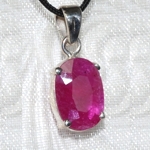Gemstones, minerals and crystals definitions
Gemstones, minerals and crystals definitions
Any discussion of crystals often involves such terms as “minerals,” “gemstones,” and “gems.” Although all these terms are sometimes used loosely and interchangeably, each has a specific meaning.
A mineral is a natural, inorganic solid with a definite chemical composition and an orderly crystal structure. Minerals must occur naturally and are never manmade. Because they are inorganic, minerals contain no biological materials and are not formed by any biological process. Minerals also must have crystalline structures consisting of orderly arrangements of atoms or molecules. Finally, minerals must have a definite chemical composition.
All minerals consist of one or more elements. Elements are the simplest materials that cannot be broken down any further. Gold, iron, and oxygen are examples of elements. The mineral hematite, or iron oxide, consists of the elements iron and oxygen.
Minerals combine to form rocks, which are the Earth’s building blocks. Rocks are solid materials that consist of two or more minerals. Unlike minerals, rocks have no definite composition and no crystal structure of their own.
Crystals always consist of only a single mineral. They are solid materials with orderly internal arrangement of atoms and molecules, and smooth, geometric, external surfaces called faces. Familiar examples of crystals are those of such minerals as quartz, pyrite, and fluorite.
Gemstones are minerals or crystals that have ornamental value and that can be cut, shaped, and polished for use in jewelry. Gemstones must have a desirable color, sufficient size to be cut or shaped, the ability to be polished, and enough hardness to endure wear in jewelry. Gemstones are rare: very few of all the minerals and crystals that exist have the qualities to be considered gemstones. The rarity of gemstones creates their value.
The term “gem” refers to any gemstone that has been cut and polished, and is ready for wear in jewelry. Like gemstones, gems are classified as precious or semiprecious based on their value. Precious gems include diamond, emerald, ruby, and sapphire: examples of the many semiprecious gems are amethyst, agate, and turquoise.
More articles of interest:



